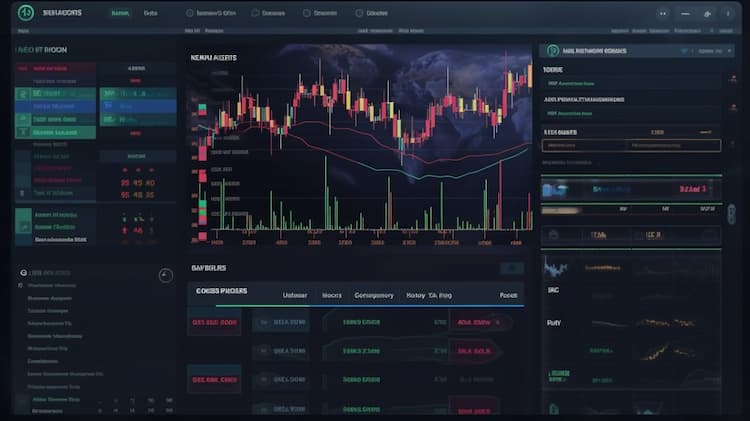SPSB ISSUER
The SPDR Portfolio Short Term Corporate Bond ETF (SPSB) is managed by SSGA Funds Management, Inc. (SSGA FM), serving as the investment adviser to the fund. SPSB aims to track the performance of the Bloomberg U.S. 1-3 Year Corporate Bond Index, which includes publicly issued U.S. dollar-denominated corporate bonds with remaining maturities of greater than or equal to 1 year and less than 3 years. The fund employs a sampling strategy to replicate the risk and return characteristics of the index, holding a subset of its securities. Additionally, SPSB may invest in debt securities not included in the index, cash equivalents, and money market instruments while maintaining a focus on short-term U.S. corporate bonds. This ETF offers investors an opportunity to gain exposure to the short-term corporate bond market, helping to manage interest rate risk and enhance portfolio diversification.
SPSB DIVIDEND
The SPDR Portfolio Short Term Corporate Bond ETF (SPSB) may not be primarily known for its dividends, but it aligns with the dividend distribution of the Bloomberg U.S. 1-3 Year Corporate Bond Index, which it seeks to track. Dividend distributions from SPSB are typically determined by the interest payments generated by the underlying corporate bonds held within the ETF's portfolio. Since the ETF primarily invests in short-term investment-grade corporate bonds, it tends to offer relatively stable and predictable dividend income to investors. However, it's essential to note that the dividend yield may be lower compared to equity-focused ETFs due to the conservative nature of its underlying assets.
SPSB TRACKING
Tracking the Bloomberg U.S. 1-3 Year Corporate Bond Index is the primary objective of the SPDR Portfolio Short Term Corporate Bond ETF (SPSB). SPSB follows a sampling strategy, allowing flexibility in selecting a subset of securities from the Index to mirror its risk and return profile. Under typical market conditions, SPSB invests at least 80% of its total assets in securities within the Index, maintaining a focus on short-term U.S. corporate bonds with maturities between 1 and 3 years, all of which are rated investment grade and denominated in U.S. dollars. Additionally, SPSB may employ derivatives to align its performance closely with the Index. The Index, managed by Bloomberg Index Services Limited, consists of corporate bonds from various sectors, with financial and industrial companies representing a significant portion as of August 31, 2022.
SPSB CORRELATION
The correlation aspect of the SPDR Portfolio Short Term Corporate Bond ETF (SPSB) primarily relates to its performance in comparison to the Bloomberg U.S. 1-3 Year Corporate Bond Index. As an ETF that seeks to replicate this index's returns, SPSB exhibits a strong positive correlation with the benchmark, making it a reliable tool for investors seeking exposure to short-term U.S. corporate bonds. Understanding this correlation is essential for those looking to manage interest rate risk and maintain a diversified fixed-income portfolio.
SPSB SECTOR
The SPDR Portfolio Short Term Corporate Bond ETF (SPSB) primarily invests in the short-term U.S. corporate bond market. The ETF focuses on publicly issued U.S. dollar-denominated corporate bonds with remaining maturities of greater than or equal to 1 year and less than 3 years, all of which are rated investment grade. While the ETF aims to provide investors with exposure to corporate bonds, it does so with a short-term horizon, which can be appealing to those seeking lower interest rate risk. The corporate categories covered by SPSB include industrial, utility, and financial institutions, providing a diversified approach to the corporate bond market.
SPSB EXPOSURE
The exposure characteristic of the SPDR Portfolio Short Term Corporate Bond ETF (SPSB) revolves around the short-term U.S. corporate bond market. SPSB seeks to replicate the performance of the Bloomberg U.S. 1-3 Year Corporate Bond Index, focusing on publicly issued U.S. dollar-denominated corporate issues with remaining maturities of greater than or equal to 1 year and less than 3 years. The ETF primarily invests in investment-grade corporate bonds from various sectors, including industrial, utility, and financial institutions. SPSB may also utilize a sampling strategy to achieve its objective, holding a portfolio of securities that closely mirrors the risk and return characteristics of the Index. For a detailed understanding of its exposure and correlation with the short-term corporate bond market, investors can use ETF Insider's web app and visualization tool.



